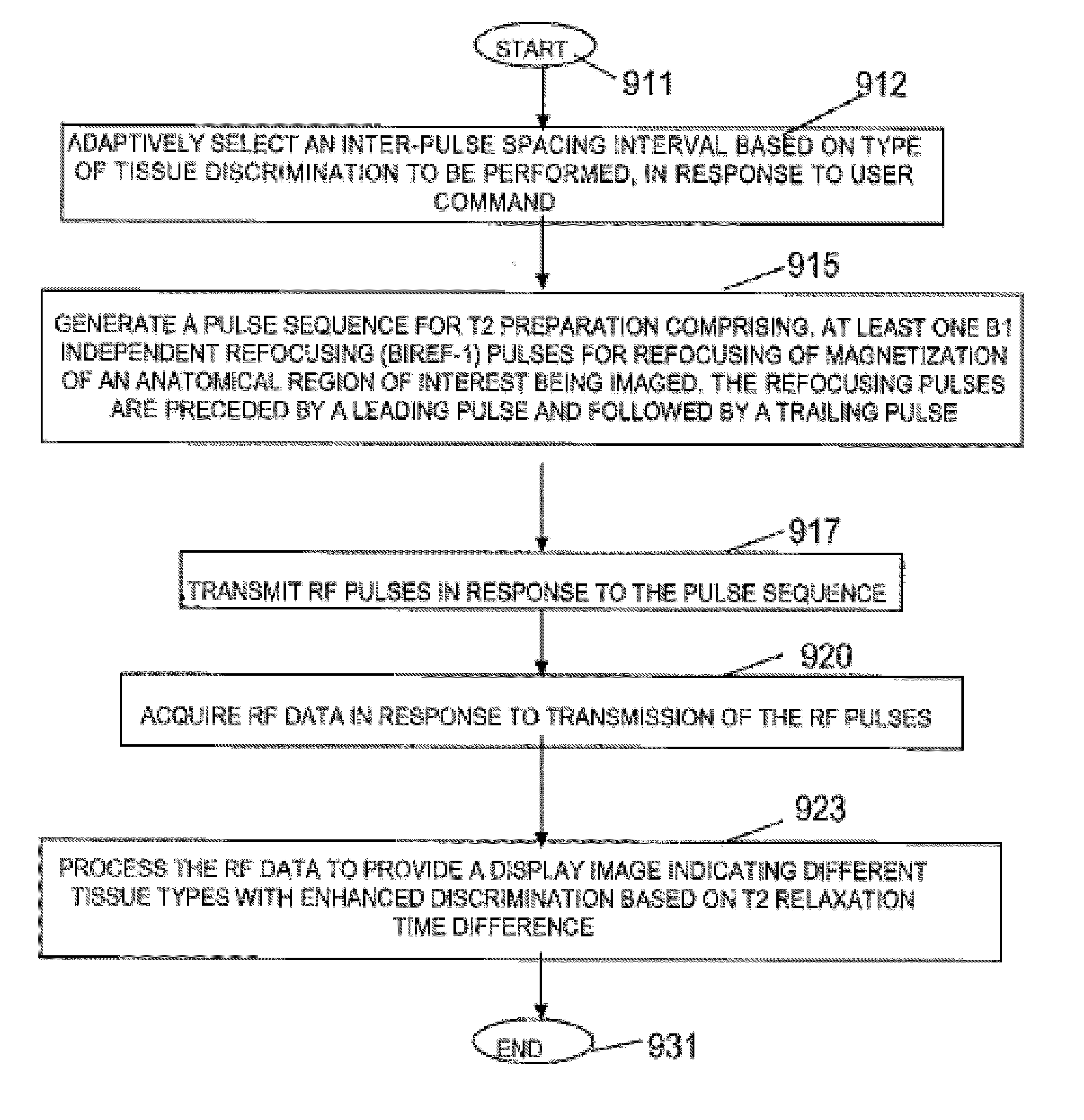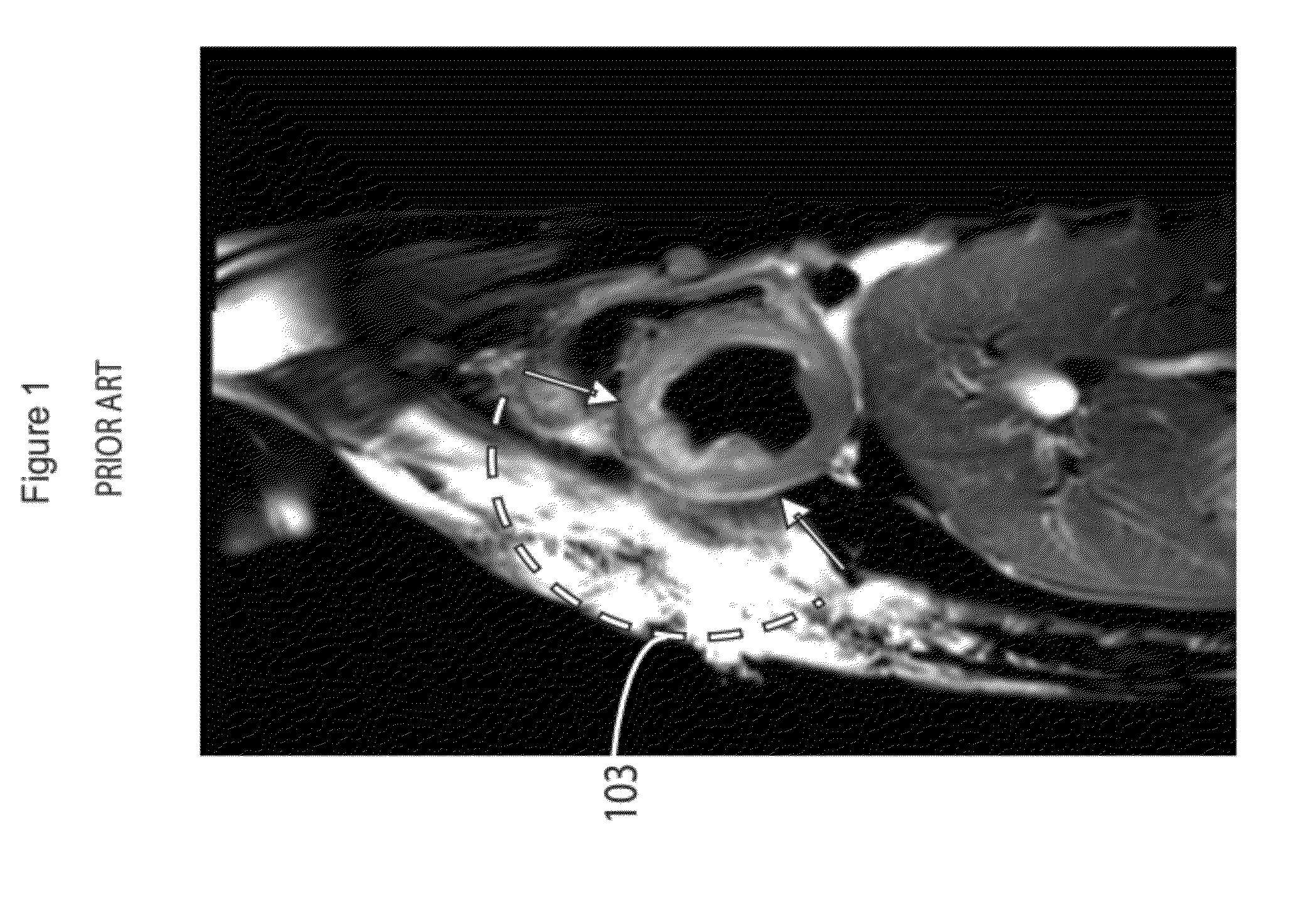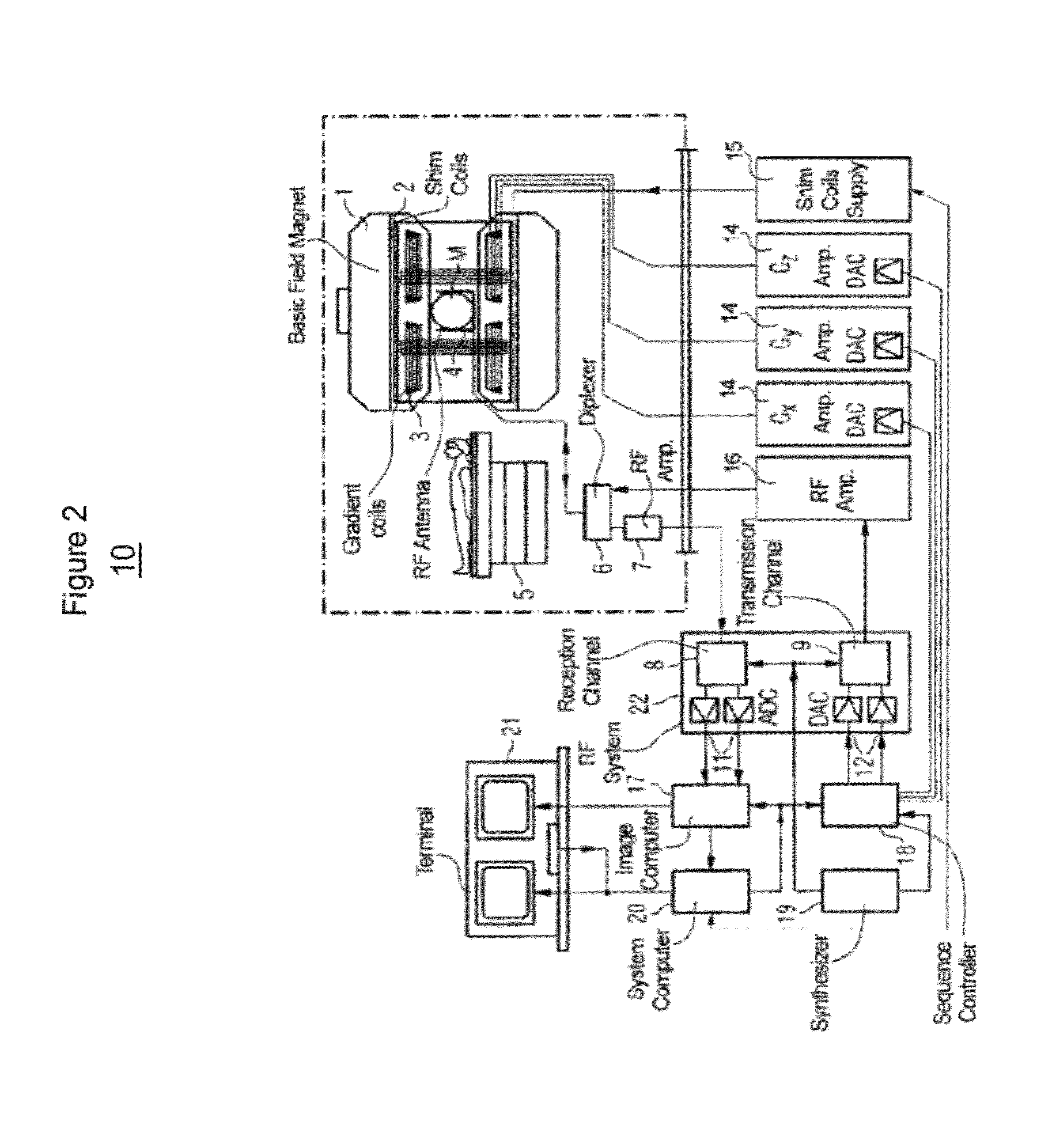MR Imaging System for Discriminating Between Imaged Tissue Types
a tissue type and imaging system technology, applied in the field of mr imaging system, can solve the problems of inhomogeneity of signal variations, inability to fully compensate for phase errors introduced by and inability to detect the phase error of the first inversion puls
- Summary
- Abstract
- Description
- Claims
- Application Information
AI Technical Summary
Problems solved by technology
Method used
Image
Examples
Embodiment Construction
Definitions.
[0025]An inversion recovery (IR) pulse inverts longitudinal magnetization from the positive z-axis by 180 degrees to the negative z-axis. IR pulses are used as preparation pulses prior to a main imaging pulse sequence to achieve different kinds of MR contrast (such as T1 weighted, T2 weighted). Adiabatic IR pulses are used to give more uniform contrast throughout an imaging volume than non-adiabatic RF pulses.
[0026]iPAT (integrated Parallel Acquisition Techniques) comprises “parallel imaging”. It enables faster scanning through reduced phase encoding and addition of RF coil information. An iPAT factor of 2 enables scanning about twice as fast, iPAT factor of 3 enables scanning about three times as fast and so on.
[0027]TI=inversion time, the time between an inversion recovery pulse and the next RF excitation pulse. TI determines the image contrast.
[0028]T1=the longitudinal (or spin-lattice) relaxation time T1 decay constant.
[0029]T2=the transverse (or spin-spin) relaxatio...
PUM
 Login to View More
Login to View More Abstract
Description
Claims
Application Information
 Login to View More
Login to View More - R&D
- Intellectual Property
- Life Sciences
- Materials
- Tech Scout
- Unparalleled Data Quality
- Higher Quality Content
- 60% Fewer Hallucinations
Browse by: Latest US Patents, China's latest patents, Technical Efficacy Thesaurus, Application Domain, Technology Topic, Popular Technical Reports.
© 2025 PatSnap. All rights reserved.Legal|Privacy policy|Modern Slavery Act Transparency Statement|Sitemap|About US| Contact US: help@patsnap.com



